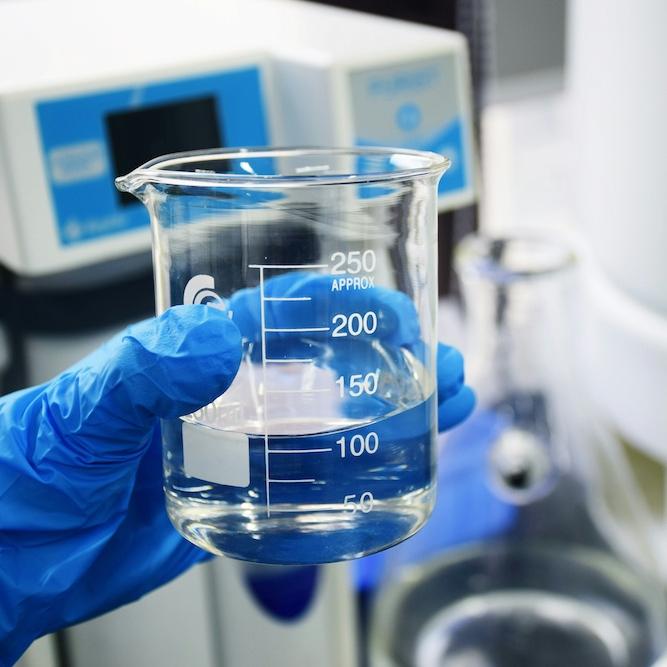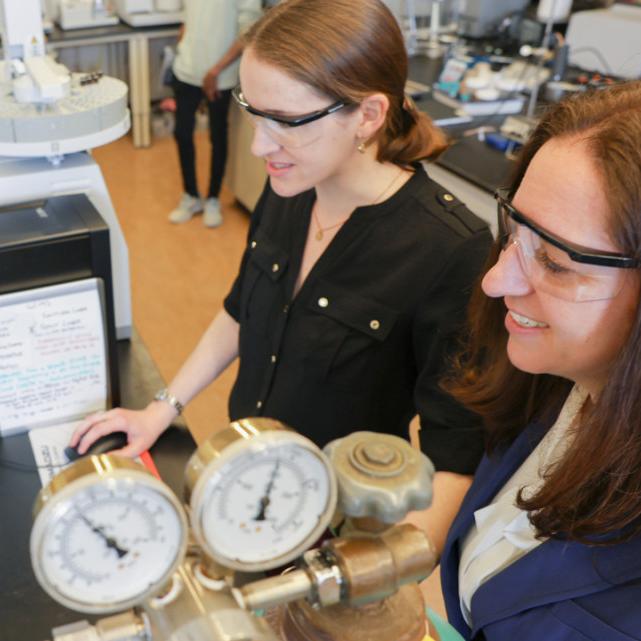A random conversation between two Cornell researchers at a child’s birthday party led to a collaboration and new understanding of how bacteria resist toxins, which may lead to new tools in the fight against harmful infections.
Physical forces have been known to affect how cells in our body grow and survive, but little has been understood about the role these forces play in prokaryotes – single-cell organisms, including bacteria.
Christopher Hernandez, associate professor in the Sibley School of Mechanical and Aerospace Engineering, had an idea for a microfluidic device that would subject individual bacteria to known amounts of force and mechanical deformation. But he knew of few ways to measure the effects – until a chance encounter with Peng Chen, the Peter J.W. Debye Professor in the College of Arts and Sciences’ Department of Chemistry and Chemical Biology.
Chen had developed a way to tag and observe a specific molecule that pumps toxins from the inner membrane of certain bacteria. By putting their ideas together, the researchers have shown conclusively that mechanical stresses can interrupt the ability of bacteria to survive exposure to toxins.
Their paper, “Mechanical Stress Compromises Multicomponent Efflux Complexes in Bacteria,” published Nov. 26 in the Proceedings of the National Academy of Sciences.
Gram-negative bacteria are characterized by their dual-membrane cell envelope and have the ability to assemble molecular pumps to rid themselves of toxic substances that manage to migrate into the cell, including antibiotics. Hernandez and Chen’s research showed that when E. coli bacteria were placed into a microfluidic device and forced to flow into very tight spaces, the resulting mechanical stresses alone were enough to cause these pumps to break apart and stop working.
“This is one of the first studies to look at the mechanobiology of bacteria,” Hernandez said. “Our findings provide evidence that bacteria are similar to other types of cells in that they respond to mechanical forces through molecular complexes.”
“Our work shows that you can disrupt the pump complex of bacteria with mechanical means,” Chen said, “and this may give us a new tool to enhance treatments of bacterial diseases.”
The methodology Hernandez and Chen created can be used to examine all sorts of prokaryotic cell structures, functions and behavior.
“Some possible next steps for us,” said Hernandez, “are to look at related complexes that also work at the dual-membrane cell wall of Gram-negative bacteria and to explore how these bacteria create this cell envelope to begin with.”
The transenvelope protein complexes that bacteria assemble to pump out toxins play a role not just in antibiotic resistance, but also in other crucial processes such as the translocation of outer-membrane components and cell division. If other types of these protein complexes are similarly affected by mechanical stresses, this suggests other physiological mechanisms in bacteria could be sensitive to mechanical forces, opening the door to possible enhanced treatments for a range of illnesses caused by bacteria.
Graduate students Lauren Genova (chemistry and chemical biology) and Melanie Roberts (mechanical engineering) were the co-first authors. Herbert Hui, the Joseph C. Ford Professor of Engineering, also contributed.
This research was supported by grants from the Army Research Office, the National Science Foundation and the National Institutes of Health. Some of the work for this study was done at the Cornell NanoScale Science and Technology Center, and at Cornell’s Biotechnology Resource Center.
Read the full article in the Cornell Chronicle.





